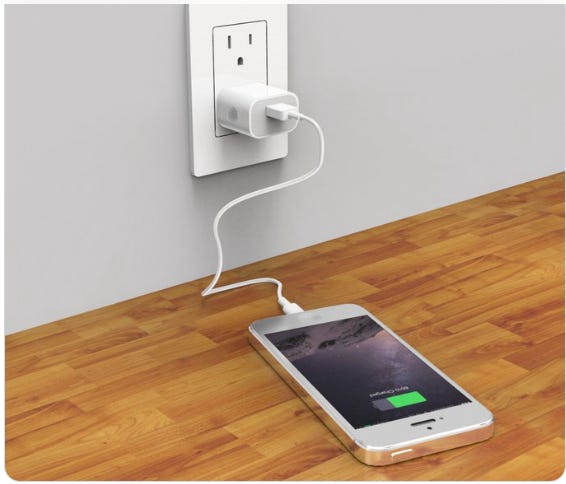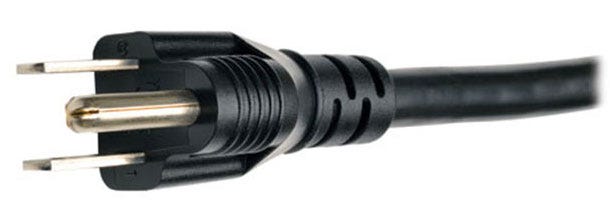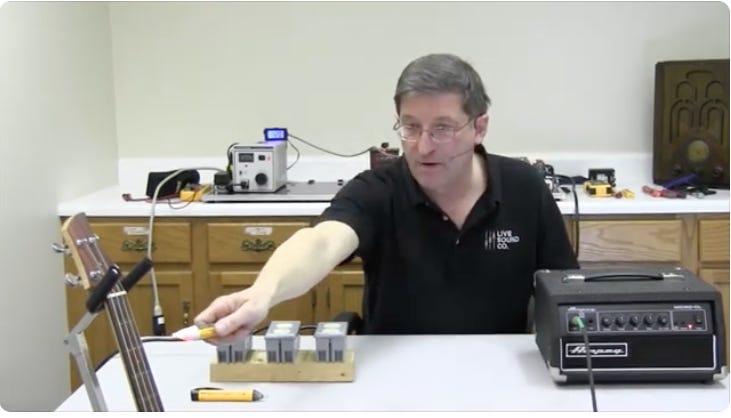Can an NCVT give a false positive?
Yes a Non-Contact Voltage Tester can give a false positive, and I'll explain why this happens
Hey Mike,
I’m hoping you can answer a question I have. I’ve tried the Internet, but I think you may be the only person on the planet who can help me. The question is: Can a Non-Contact Voltage Tester (NCVT) give a false positive? —M. Morse
Hey M,
Well, in a word, yes. But in reality it really is finding voltage, just not necessarily with enough current to do you any harm. So here are a few situations where you can easily get a “false” positive.
USB Phone Chargers
For example, if you plug in your basic iPhone to a wall outlet and test it with an NCVT (Non Contact Voltage Tester) it will indicate a voltage by beeping.
In fact, if you measure the cell phone body with a high-impedance volt meter you’ll find that the case of the phone actually has around 60 volts AC on it while plugged into a wall charger. Now, the wall charger itself isolates you pretty well from the 120-volt line voltage. But there will always be a certain amount of leakage that’s typically less than 1/10 of a mA (milliamp) of current. And since that current has no place to go it will energize the phone case with around 1/2 of the line voltage. That can create 60 volts of so of “hot-skin” in the USA, but wiht a fault current that’s below the threshold of what you can even feel and so it’s certainly safe.
However, if you plug your phone into a damaged USB charger (maybe it’s been dunked underwater or physically damaged), it can actually electrify the case of your smartphone with significant current. And that is exactly how several young people in China and russia died a few years ago while talking on their smartphones that were plugged into defective USB chargers. At least one died after dropping their charging cell phone into the bathtub accidentally, and two died while in the shower and reaching out to pick up a cell phone that was plugged into a charger.
And in 2017 a girl in Texas died while talking on her phone while she was in the bathtub. Apparently her phone was plugged into a USB charger via an extension cord that was plugged a non-GFCI outlet. Of course, a properly wired GFCI outlet should have tripped and saved her from electrocution, which is why you should never bypass one. This is no joke, and you can read about the tragedy HERE.
Crock Pots will usually test false positive with a NCVT
And here’s why crock-pots which don’t have a grounded power cord from the factory will usually test positive for a hot-skin voltage.
Even if there’s no internal fault they’ll typically develop around 60 volts on the metal chassis (1/2 of the 120-volts in the power line) but at less than 1 mA of leakage current, so they’re safe to touch. But I still won’t stand in a shower with a plugged-in smartphone, or a puddle while touching an ungrounded crock-pot.
How can a non-grounded appliance become dangerous?
Yes, it can be. It’s certainly possible for there to be an internal ground fault to the chassis. Could be frayed internal insulation or water infiltration. Fortunately these appliances are supposed to be double-insulated and most have a non-conductive body, so electrocution is a very rare occurrence. But if you do feel any kind of shock or tingle from an appliance with a non-grounded cord it’s still a warning sign that the internal insulation barrier has broken down and you could be seriously shocked. So never ignore feeling ANY electric shock from an appliance, tools or your RV..
What about appliances with grounded power cords
However, if you’re testing anything that’s powered with a grounded power plug and you measure a voltage on the chassis with an NCVT, then there’s something very wrong with your electrical grounding system which could become deadly at any time. Any appliance or tool (such as a drill press or gringer) with a grounded plug should NEVER show a voltage on the chassis using a NCVT. If it does, then the safety ground has been compromised and things could become dangerous at any time.
Final analysis!
So the bottom line is, anything that’s plugged in with a factory non-grounded plug can have up to 60 volts on its chassis/skin but is probably not dangerous even though it will make an NCVT light up and beep. But anything you plug in with a grounded plug should NEVER cause an NCVT to light up and beep at you. And if you ever feel an electrical shock while touching anything, then please have it checked by a qualified electrician or technician.
BONUS VIDEO
If any of you are musicians, here’s a video I made a while back on how to check electric guitars and stage amplifiers for potential shock hazards using an NCVT. Improperly grounded stage amplifiers and microphone mixers kill a few musicians every year. You should never feel a shock from your guitar or microphoner. Watch the video HERE.
Let’s play safe out there… —Mike Sokol










Thanks Mike, great expose on “false positives” from non-contact voltage measurements. I wish the author of the original question had described the situation that prompted their question. What were they trying to measure and why? There is a lot of subtlety in these kinds of measurements and your example of a cell phone charger “false positive” made me wonder how you could tell the difference between a good cell phone charger and a faulty one if even a good one has enough line voltage leakage to trigger a non-contact tester? I assume there are varying levels of quality (e.g., sensitivity) non-contact testers out there; do you know if some of them could distinguish between a good and a leaky charger and some can not? Or, should you need to follow up a positive with an ac leakage current measurement as a definitive test? It would be great if you could do a follow-up article that tells your audience what to do if they do get positive so they can rule out an actual safety issue. Again, thank you for sharing a great topic and learning opportunity.